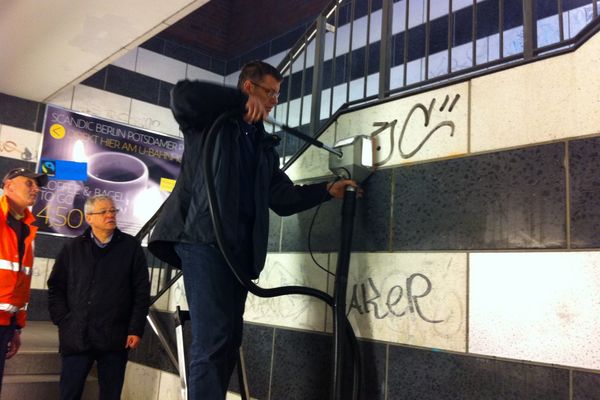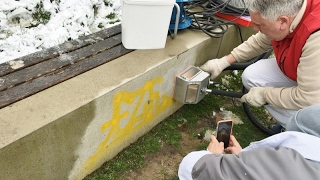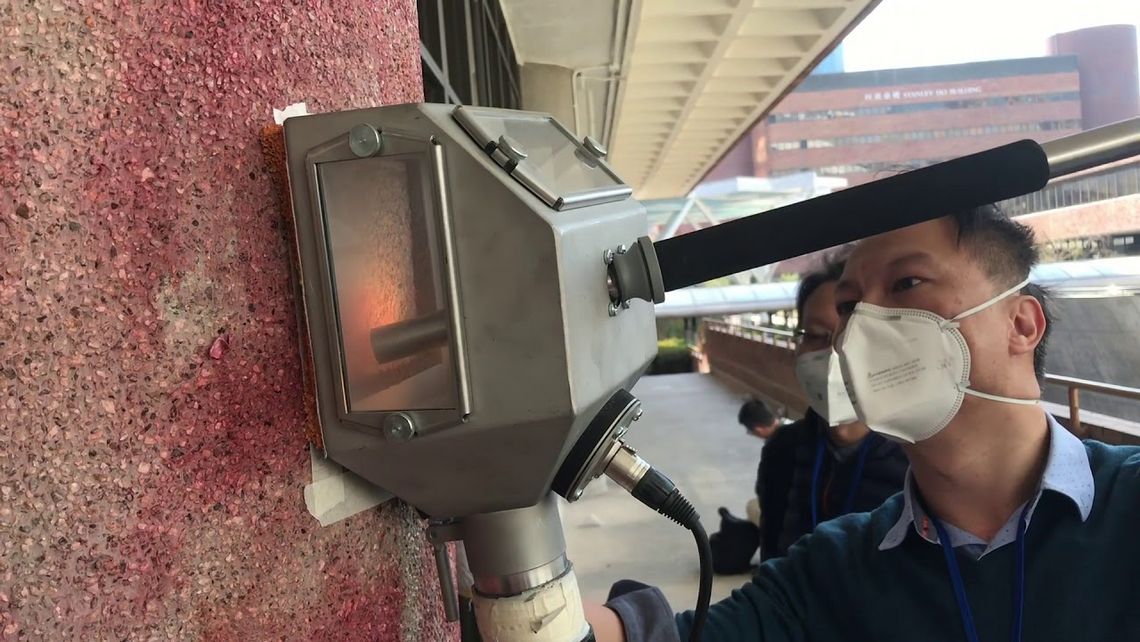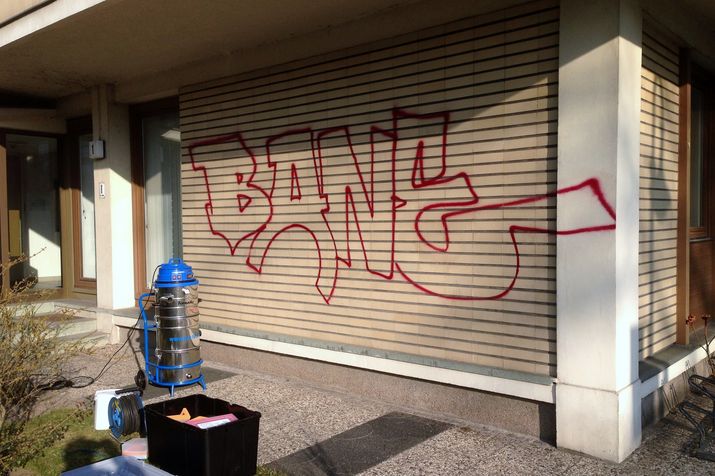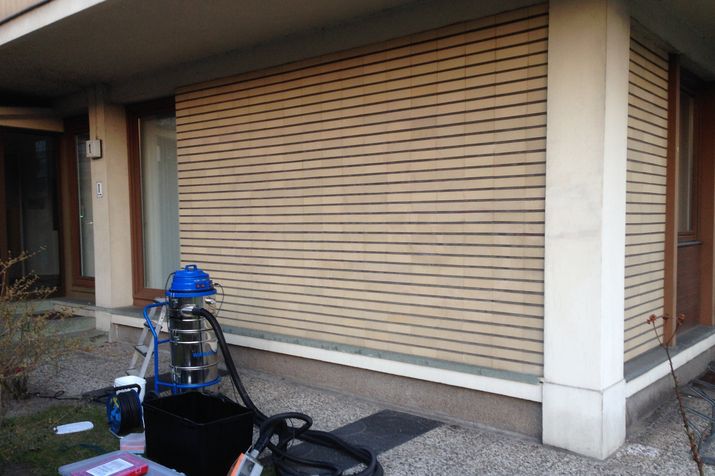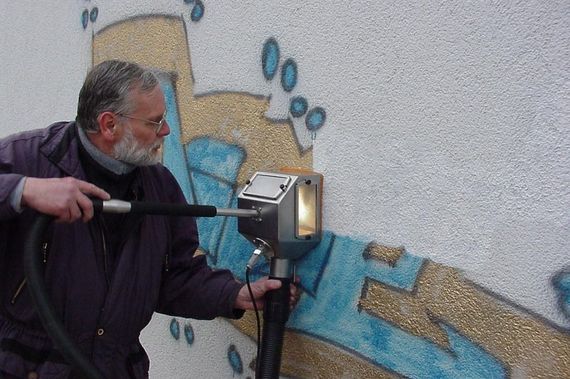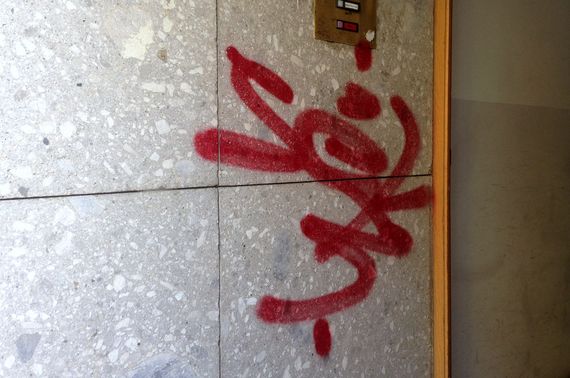In any case Graffiti should be removed relatively quickly , because a first graffiti encourages imitators to do more. In addition, the paint penetrates deeper and deeper layers over time, which makes graffiti removal more difficult. Especially on the south side, the paint is quickly burnt in by the sun. There are numerous methods available for graffiti removal. However, depending on the surface, not all methods are suitable. Applications based on abrasive blasting and pressure blasting can quickly cause more damage to the wall or façade than one would like. The consequences are expensive re-treatments.
Work on graffiti that you carry out yourself can also cause undesirable side effects, such as damage to the façade. This drives up costs unnecessarily. If you think about the environment, you should avoid using chemicals, water and high pressure as much as possible.
Of course, it is not only the protection of the substrate and the sustainability of the graffiti removal technique that play a role, but the result should also be right. Not all methods succeed in removing the graffiti from the pores. If the pressure is too low, for example, the wet blasting method will not be able to remove the last remnants of paint. All pressure blasting methods, even with dry ice, are not very environmentally friendly because everything that is removed flies around and remains on the ground. The disposal costs for this have skyrocketed.
Processes such as vacuum blasting are not only environmentally friendly because of the closed cycle, but also very easy to use. Special protective measures are not necessary.
If these considerations are taken into account, only vacuum blasting can be considered for the professional and proper removal of graffiti. In terms of treatment results, environmental friendliness and protection of the substrate, this method scores best. The environment is not polluted by chemicals and the substrate is not damaged. Even sensitive materials can be treated with vacuum blasting.
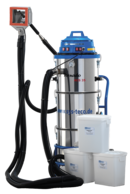
![[Translate to English:] Graffiti auf Klinker entfernen Graffiti entfernen auf Klinker ohne Hochdruck](/fileadmin/_processed_/b/a/csm_autobahnraststaetten-reinigen_4bcc8483e0.jpg)
![[Translate to English:] Graffiti entfernen auf Putz Auf Putz Graffiti entfernen mit der Reinigungstechnik von systeco](/fileadmin/_processed_/b/4/csm_graffitientfernung-reinigungsmaschine_e66fa70cbb.jpg)
![[Translate to English:] Graffiti entfernen auf Farbanstrich Graffitientfernung auf Farbanstrich ökologisch und klimaneutral](/fileadmin/_processed_/2/0/csm_graffiti-entfernen-reinigungstechnik_4f30000d32.jpg)
![[Translate to English:] Graffiti auf Farbe entfernen Graffiti umweltfreundlich auf Farbe entfernen mit Tornado ACS](/fileadmin/_processed_/e/a/csm_reinigungsmaschine-graffitientfernung-naturstein_9af9e17dca.jpg)
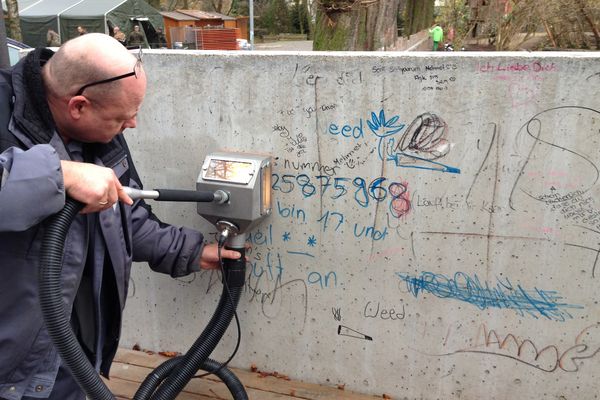
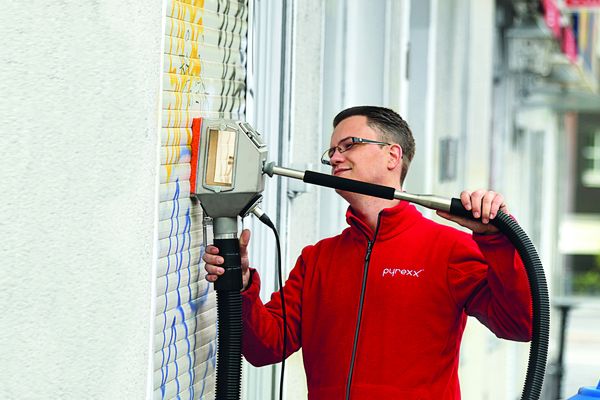
![[Translate to English:] Graffiti entfernen auf Fliesen ohne Hochdruck und ohne Chemie Graffiti entfernen auf Fliesen](/fileadmin/_processed_/5/c/csm_graffitientfernung-reinigungstechnik-systeco_7791a47b82.jpg)
![[Translate to English:] Graffitientfernung im Denkmalschutz ökologisch und umweltfreundlich Graffitientfernung Denkmalschutz](/fileadmin/_processed_/6/2/csm_listed-natural-stone-cleaning_39c33fd3a0.jpg)
